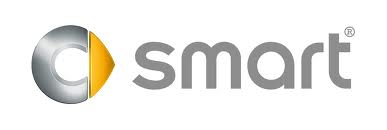ForTwo L3-1.0L (2009)

in the housing is the major differentiating characteristic. Different contact families may be installed in the same housing. In addition, different codings
(e.g. A, B, C) may exist within the same plug/coupling family.
Codings are special profiles or teeth on the housings of the coupling and the plug, which may be marked in different colors (e.g. black, white, violet).
These ensure that connector pairings can only be made with the same codings.
^
Safety and restraint systems (airbag, emergency tensioning retractor, roll bar) have yellow, orange, or red plug connections for easy identification.
Part number assignments
The housings are assigned according to the part numbers on the housings. On housings made up of several components, the number on the external
housing is critical. (When ordering, all the individual part numbers must be ascertained.)
This method of identification by means of part numbers can be used when referring to the literature.
Contacts
A distinction is made between the contact pin and the female contact. Each contact pin and each female contact can be clearly assigned to one group or
"family" (e.g. SLK, JPT). Within these families distinctions are made according to the cable cross section and whether there is single-strand insulation
for watertight connections. The contacts are also distinguished by their coating (tin, gold or silver).
The contacts are fastened to the cables by means of crimping.
Crimp connections
Crimped connections are used to connect female contacts or contact pins to the line. Each contact type must be crimped with the aid of specifically
assigned die sets using a pair of pliers. Determining factors: contact family, size of cable cross section, with or without single-strand insulation.
Only lines up to 4 mm2 shall be crimped.
Unpinning
This requires a release tool appropriate to the contact family in order to remove female contacts and contact pins from plugs and couplings.
On some plugs and couplings the housings must first be disassembled and unlocked (secondary release) according to the instructions before the actual
unpinning.
Contact materials
The contacts used in the interior of the vehicle are primarily tin/tin combinations. Those used on the exterior and in the splash zone are generally
silver/silver. Safety systems (particularly the airbag) are equipped with gold/gold contacts.
"Similar" contact pairs with the same contact surface (coating) are required for the repair.
AH00.19-P-1000-07A Notes on soft soldering
AH00.19-P-1000-07A Notes On Soft Soldering
General information
Soft-soldering is a process for creating an inseparable join between two or more metal parts using additional metals (e.g. soldering tin). The solder
melting temperature lies below the melting temperature of the metals to be joined and is lower than 450 °C.
The connection is created by wetting the joint locations with hot liquid solder, without melting the parts to be joined. The joining procedure is assisted by
using a flux, which releases surface oxides on the parts to be joined, eliminating and preventing surface films (e.g. greases).
Soft soldering materials
The soldering alloy determines its melting point and thus the working temperature during the soft soldering process. Additives modify the properties.
Silver components improve the surface and joining properties, for example. Ensure that lead-free solder is used.
Soft solders are identified according to DIN EN 61190-1-3 or DIN EN 294453/ISO 9453.
Example: ELSOLD soft solder FLOWTIN TC07 Sn99,7Cu0,7
The alloy consists of 99.7 % tin (SN) and 0.7 % copper (Cu)
The melting range is 227 °C.
In the electrical system/electronic sector for vehicles, fast solders with a melting point range of approx. 180 °C to 227 °C should be used. These solders
are available in the form of wires. They have flux from resins dissolved in alcohol (e.g. colophonium) in their hollow center.
Soldering equipment
Soldering equipment with soldering tips that can reach a temperature of 250 °C to 300 °C are suitable for the repairs specified by Daimler. The aim is to
